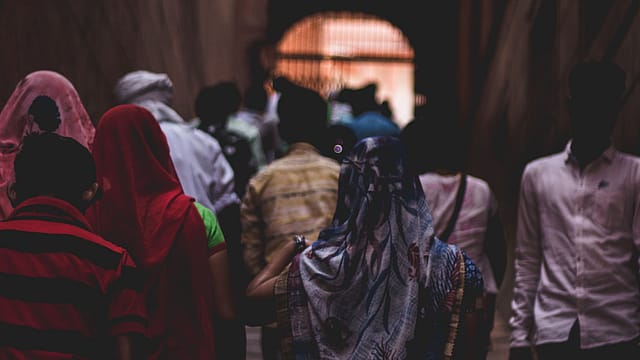How the Coronavirus lockdown could backfire in slums
ADVERTISEMENT

Lockdown and social distancing, important preventive measures to contain the spread of Covid-19, could actually backfire in slums and other overcrowded places where the poor and vulnerable sections of society live, says an expert.
People living here, mostly daily-wagers, do not have enough savings for expenses till the lockdown ends, according to Prof. Amitabh Kundu, distinguished fellow at the New Delhi-based think tank Research and Information System for Developing Countries.
Prof. Kundu, who has studied the lives of people living in slums in Mumbai, Pune, and Chennai, says at least 20% have no choice but to come out of their shanties for basic needs like fetching drinking water, or to use community toilets. “When four or more people are virtually locked up in one room for days and not allowed to go out, the social density of that place actually increases and the positive impact of social distancing is negated,” he adds.
In normal times, only one or two members of a family would be at home (10x10 ft, with a small partition serving as kitchen); the rest would be out for work. With the lockdown in place, shanties (built choc-a-bloc over tracts of land) would be full. One case that goes undetected is enough to wreak havoc.
December 2025
The annual Fortune 500 India list, the definitive compendium of corporate performance, is out. This year, the cumulative revenue of the Fortune 500 India companies has breached $2 trillion for the first time. Plus, find out which are the Best B-schools in India.
So whether the government needs to have a different strategy for slums is a question up for discussion.
An even bigger challenge is the exodus of migrant workers to their home states in the thousands. Especially at a time when public transport services are skeletal due to the lockdown. Many people are stranded and getting them home safely without they being infected and becoming carriers of the disease is a particularly serious problem.
Daily wagers have no choice but to return home, not just because their livelihood is gone, but also because they cannot send money back to their families in the villages. Moreover, if they want to avail of the relief measures announced by state governments, they need to be in their home state. As of March-end, 15 states have announced relief measures amounting to 0.14% of the country’s GDP. The centre’s fiscal package of ₹1.7 lakh crore will be deposited in their bank accounts irrespective of where they are working.
According to Kundu’s projection, using the census data of 2011 and NSS0 migration data of 2011, the inter-state migrant population is around 68 million households, 33% of whom are workers. Out of these workers, seven million households are daily wagers, eight million are street vendors and nearly four million are monthly wage earners, and fall in the category of the poor or vulnerable. Thus even on a conservative basis 19 million people are likely to lose their wages and employment during the lockdown. In these circumstances, Kundu puts the 8 million street vendors in the vulnerable category also.
So there are perhaps 19 million families with no jobs or adequate support system wanting to go home, but have no safe or secure form of transportation. “Even if four million have already reached their home states, 15 million remain and the job of both the centre and state governments is to ensure that they are provided with all basic necessities, so they feel no need to return to their home states,” says Kundu.
For those stranded mid-way, it is the government’s duty to provide them safe transportation because by travelling in crowded buses or trains, they greatly increase the risk of spreading the virus.
This is not to say that that the government has not taken many steps to alleviate the pain of the migrant population. At last count, 21,064 relief camps have been set up by the Union and state governments, providing food, shelter and medical facilities to them. Around 666,291 persons have already been provided shelter and 2,288,279 provided food.
